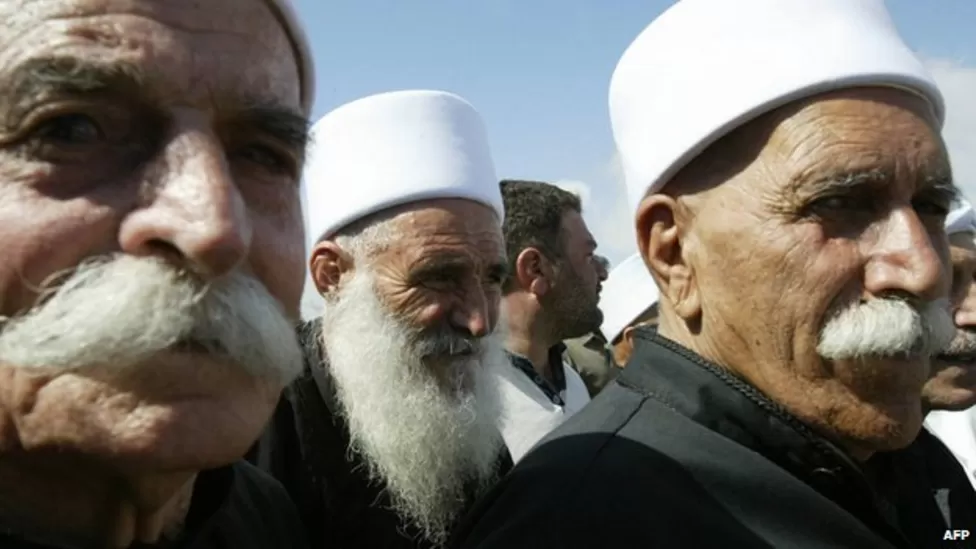The Druze: A Brief Overview
We explore Druze mindfulness in this article, as it presents in the history, culture and practices found within the religion. Originating in the 11th century in the Middle East, the Druze community is known for its rich cultural tapestry, influenced by Islamic, Gnostic, Greek, and Persian philosophies. The Druze faith, secretive and closed to outsiders, emphasizes living an ethical, honest, and loyal life. The Druze have a strong sense of community and often live in close-knit societies in Lebanon, Syria, and Israel. Explore the origins of the Druze faith.
Historical and Regional Influences
The formation of the Druze culture has been significantly shaped by regional dynamics. Historically, the Druze have navigated complex political landscapes, often facing persecution. This tumultuous history has not only strengthened their sense of community but also deeply influenced their spiritual practices, making mindfulness a necessity for resilience and inner peace. Read about Druze history.
Mindfulness in Druze Practices
Mindfulness in Druze culture is less about formal meditation and more about a way of life.
Here some of the key aspects:
- Contemplative Prayer: Though much of their religious practices are kept private, it’s known that contemplative prayer is a significant part of Druze spirituality. This form of prayer encourages a mindful connection with the divine, fostering a sense of inner calm and awareness.
- Community Gatherings: Social interactions within the Druze community often involve discussions on ethical living and spiritual teachings. These gatherings promote a collective form of mindfulness, encouraging members to live in harmony with their values. Discover the power behind neuroscience of community.
- Connection with Nature: The Druze community often emphasises a strong connection with nature, which is seen as a path to spiritual enlightenment. This connection encourages mindfulness through a deep appreciation and awareness of the natural world. Read about nature and mindfulness.
- Art and Music: Cultural expressions through art and music also play a role in the Druze religion. These activities are not just for enjoyment but are avenues for spiritual reflection and mindful contemplation. For a deep dive into the Druze cultural influences, watch this informative overview.

Druze Mindfulness Embracing Nature and Spirituality
The Druze community, deeply rooted in monotheism, holds a profound belief that God created all beings perfectly and entrusted them to humanity. This belief is not just a statement of faith but a call to action. It emphasizes the role of humans as stewards of the Earth, responsible for maintaining its balance and harmony. In Druze theology, mistreating the environment is not only a disservice to nature but also a deviation from the path to divine glory. This perspective shapes their mindfulness practices, where understanding and respecting the natural world is seen as a reflection of divine wisdom. The Druze view existence as a unified whole, where every action towards nature impacts the delicate equilibrium of life.
The Druze Approach to Conservation and Mindfulness
For the Druze, forests and natural reserves are more than just spaces of ecological importance; they are sacred grounds for worship, meditation, and transcending the material world. Their approach to conservation is deeply intertwined with their spiritual practices. They believe that in nature, one can encounter God without barriers, leading to a profound experience of mindfulness.
This connection with nature is not through exploitation but through appreciation and reverence. Druze hermits and believers often seek solitude in nature, finding spirituality in the heart of forests, among trees, water, birds, and rocks. Their places of worship, known as “khalawat,” are intentionally simple and secluded, emphasizing harmony with all elements of nature. This deep connection with the environment reflects a broader commitment to preserving nature, not just for its own sake but as a crucial aspect of their spiritual journey and mindfulness practice.
Discover the Druze connection with nature.
Applying Mindfulness in Everyday Life
Druze mindfulness practices, with their focus on ethical living, community harmony, and nature, can offer valuable lessons for anyone interested in mindfulness. Here are some actionable steps inspired by Druze practices:
- Reflect Daily: Spend a few minutes each day in quiet reflection, contemplating your values and how your actions align with them.
- Foster Community Connections: Engage in meaningful conversations with others about ethical and spiritual topics.
- Nature Walks: Regularly spend time in nature, focusing on the sights, sounds, and sensations around you.
- Artistic Expression: Use art or music as a form of mindful exploration of your inner world.
Takeaways from Druze Mindfulness Practices
The Druze community offers a unique perspective on mindfulness, deeply interwoven with their cultural and historical identity. By understanding and incorporating aspects of Druze mindfulness into our lives, we can enrich our own mindfulness practices with a sense of history, community, and connection to the natural world. For more insights into mindfulness practices, visit our Get Started page and explore other related topics on our blog.



